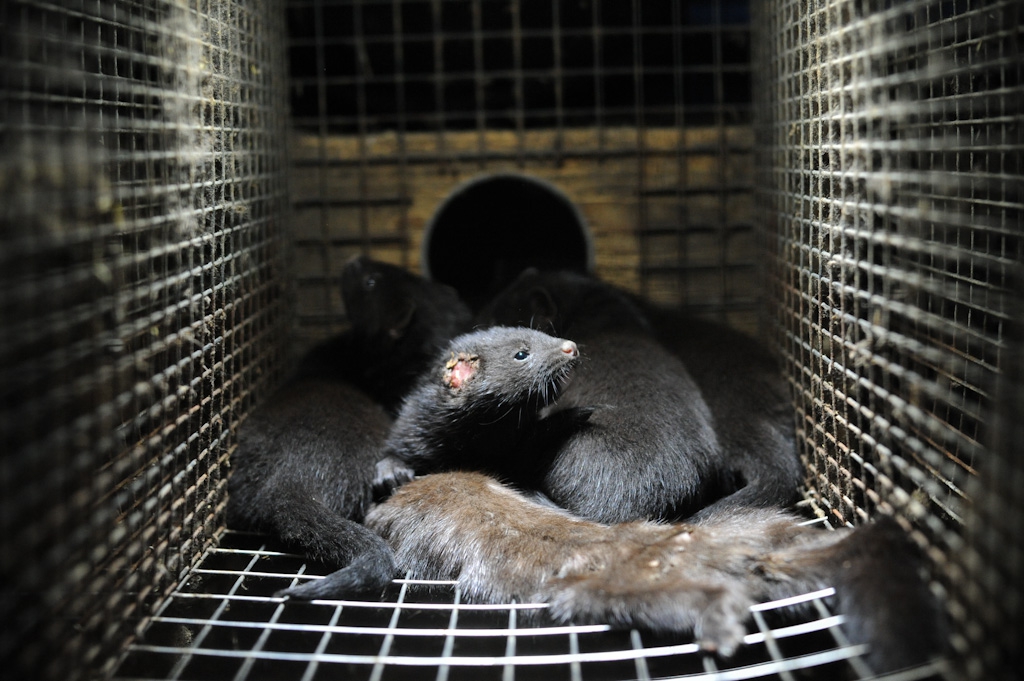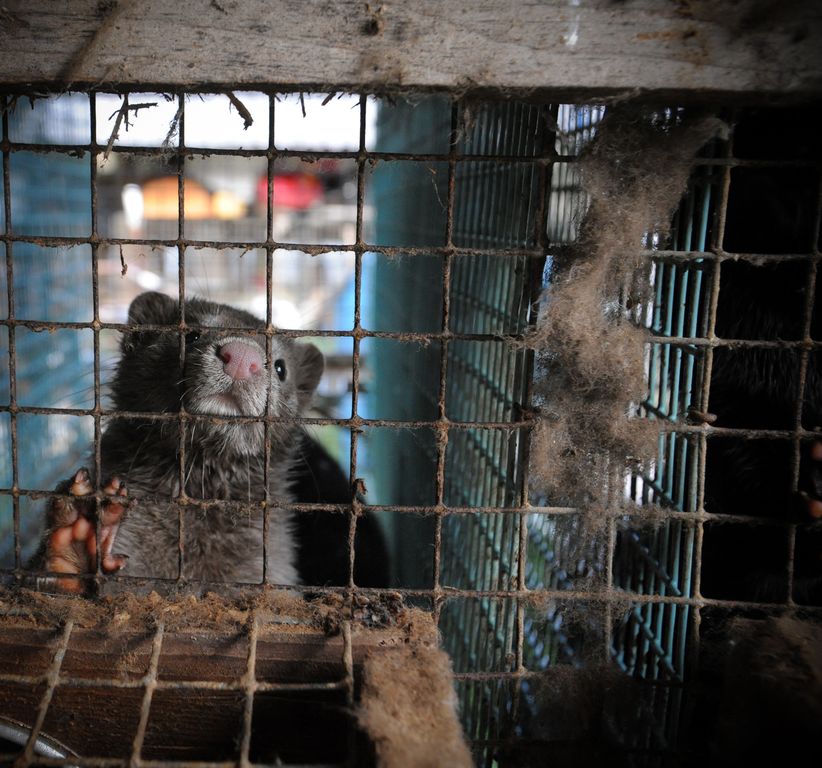The majority of Canada’s fur trade is now made up of fur farms, which are regulated by the same provincial bodies that oversee agricultural farms. Though there are some rules in place to protect the “welfare” of farmed animals such as mink, many of them are extremely subjective.
Mink, when in the wild, keep several dens near their preferred hunting grounds – commonly along streams, rivers and lakes. Each den is a complex tunnel system running about three feet below the surface and can be up to twelve feet long. They’re lined with foliage or feathers for nesting. As solitary mammals, mink hold territories up to six kilometres long when near waterways and as large as 50 acres when in wetlands.
But when kept on a fur farm, the requirement for a single, adult female mink is a 15 in by 8 in caged box with a platform (literally a shelf in the cage) and a nest box.

It is noted in the Code of Practice for the Care and Handling of Farm Mink that mink “must be exposed to at least the minimum of continuous hours of daylight provided by a natural photoperiod.”
However, mink activity in the wild takes place primarily between dusk and dawn, mostly after dark.
There is no doubt that mink suffer daily in these cramped quarters, far from what their natural instincts instruct them to be doing. But with the summer heat scorching, conditions may be much worse than we could imagine.
The requirements for temperature control for farmed mink are entirely subjective:
• Adequate dry bedding material must be available in the nest box;
• Stock people must be trained to recognize signs and symptoms of heat and cold stress and to respond appropriately; and,
• Actions must be taken to help mink maintain appropriate body temperatures during extreme ambient temperatures.
Most farmed mink live in wire cages in sheds. These are not fully HVAC regulated, environmentally enclosed areas that simulate a natural habitat. They are what they sound like: wire cages lined up in sheds. When temperatures in Canada begin hitting 30ºC daily (without factoring in the humidex or air quality index), it is nearly unimaginable what these sentient creatures are experiencing.
Mink spend up to 80 per cent of their active time in water; this is largely due to their semi-aquatic and carnivorous nature.
However, being in the water is also an excellent way to thermoregulate for mink, just as it is for many other species. Their dens, being tunnelled deep below the surface, will remain consistently cooler and protected from harsh sunlight.
For an intelligent, sentient animal that prefers the cool underground or water – and being away from others of its species – being lined up in a shed without the ability to escape in extreme heat is another reason to end this barbaric practice.

Photos: Mink farm. Credit: Jo-Anne McArthur, We Animals.
